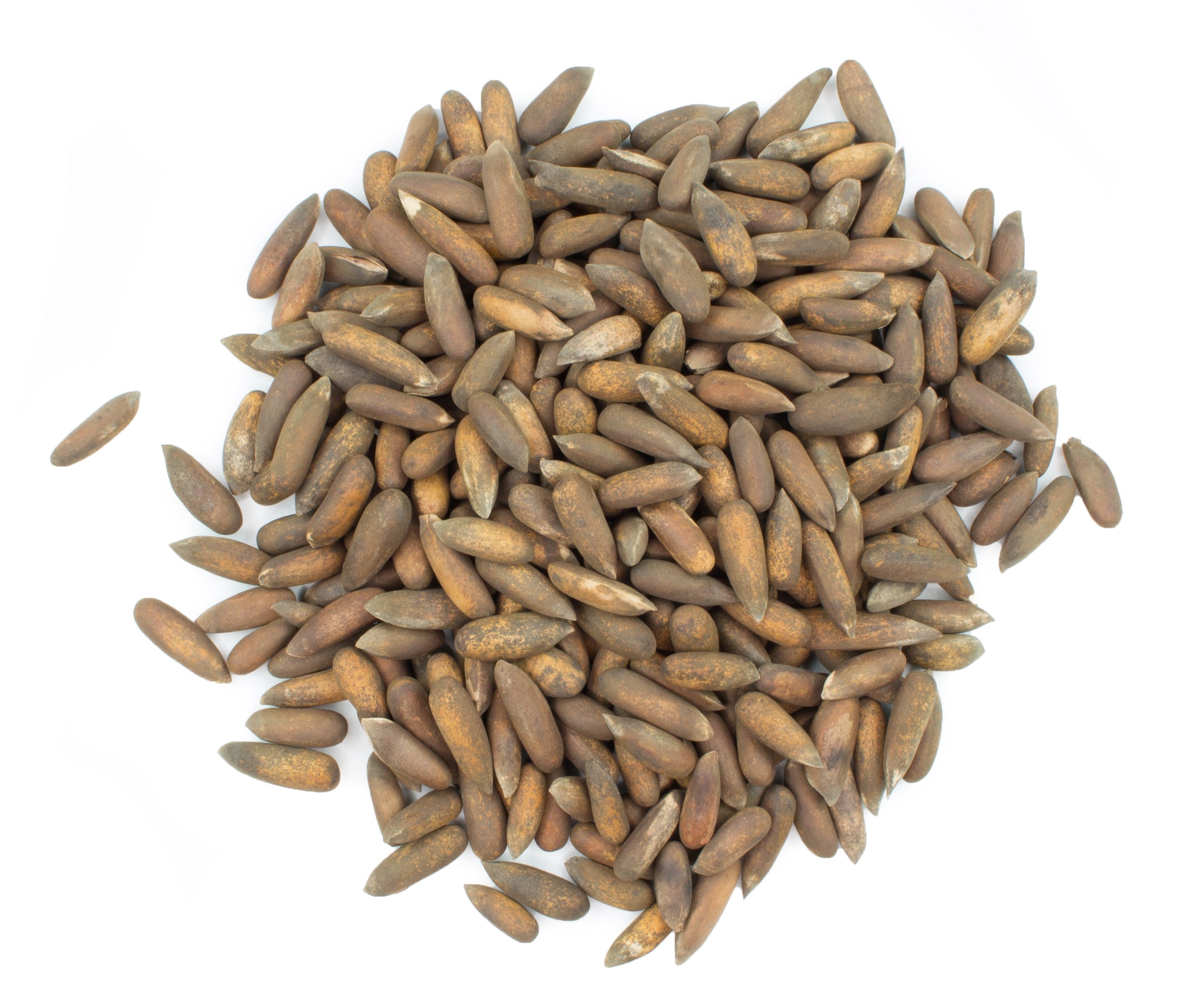Pine Nuts in Shell
JalghouzaPine nuts are extracted from the female pine cones. Only certain types of pine trees bear the edible type of pine nuts. The thin long pine nuts are native to certain regions in Afghanistan, Pakistan and Syria.
Pine kernels are very good source of plant derived nutrients, essential minerals, vitamins and “heart friendly” mono-unsaturated fatty acids that help benefit in reducing cholesterol levels in the blood.
Health Benefit
- Pine nuts are one of the calorie-rich edible nuts. 100 g of dry-kernels provide 673 calories. They comprise of numerous health promoting phyto-chemicals, vitamins, antioxidants, and minerals.
- Pine nuts assist in lowering LDL, bad cholesterol, and increases HDL, good-cholesterol, in the blood.
- Pine or cedar nuts contain essential fatty acid (omega-6 fat),pinolenic acid.
- Pine nuts are an excellent source ofvitamin E, and contain about 9.33 mg per 100 g (about 62% of RDA). Vitamin E is a powerful lipid soluble antioxidant, required for maintaining the integrity of cell membrane of mucus membranes and skin by protecting it from harmful oxygen-free radicals.
- Pine nuts are one of gluten free tree nuts, and therefore, are a popular ingredient in the preparation of gluten-free food formulas. Such formula preparations can be a healthy alternative in people with wheat food allergy, andceliac disease.
- Pine nuts are an excellent source of B-complex group of vitamins such as thiamin, riboflavin, niacin, pantothenic acid, vitamin B-6 (pyridoxine) and folates. These vitamins work as co-factors for enzymes in cellular substrate metabolism inside the human body.
- Pine nuts contain healthy amounts of essential minerals likemanganese, potassium, calcium, iron, magnesium, zinc and selenium. At 8.802 mg per 100 g (about 383% of daily recommended intake), pine nuts are one of the richest sources of manganese.
Selection and storage
In the wild, the seeds that drop down on the ground are generally gathered and processed. In the markets, one may find shelled as well as unshelled pine nuts displayed for sale.
When you are buying whole unshelled nuts, look for those feature bright brown color, compact, uniform in size, feel heavy in hand and should produce good metallic sound when poured down from a height. They should be free from cracks, mold, and spots and of rancid smell.
Shelled and processed kernels are also put for sale in air-tight plastic bags in the stores. Always try to buy fresh nuts from authentic sources.
Unshelled nuts have a long shelf life and can be stored for many months. Shelled kernels deteriorate soon if exposed to warm, humid conditions. Therefore, store shelled nuts in airtight jars and store inside the refrigerator.
Preparation and serving method
Here are some tips on how to prepare and enjoy pine nuts:
- Pine Nuts with shell are consumed in the same way as sunflower seeds, by breaking the shell and enjoying the tasty treat inside
- Pine nuts can be consumed as they are for snacks or dessert. Additionally, they can also be roasted, salted or sweetened.
- They also used in granolas, biscuits, cookies, chocolates and crunchy energy bar preparations.
- Pine nuts also used in salads; especially sprinkled over fruit/vegetable salads.
- Pine nuts are used in desserts, particularly sundaes and other ice cream/confectionary based recipes.
- They feature frequently in meat, fish, and vegetable dishes.
- Pine nut oil is used in salad dressing and in cooking.
Safety profile
There are several reported cases of altered taste perception (cacogeusia or pine mouth) following to pine nut consumption. It appears a few days after eating the nuts and may persist for up to a week. However, Pine mouth is self-limited condition and resolves on its own without any sequel.
Pine nut allergy may occur in some sensitive individuals. The reaction symptoms may range from simple skin itching (hives) to severe form of anaphylactic manifestations, including breathing difficulty, pain abdomen, vomiting and diarrhea. Cross-reactions may also occur with some other nuts and fruits, especially of Anacardiaceae family members such as mango, cashew nuts, pistachio. Persons with known allergic reactions to these nuts may therefore need to observe caution while eating them.


